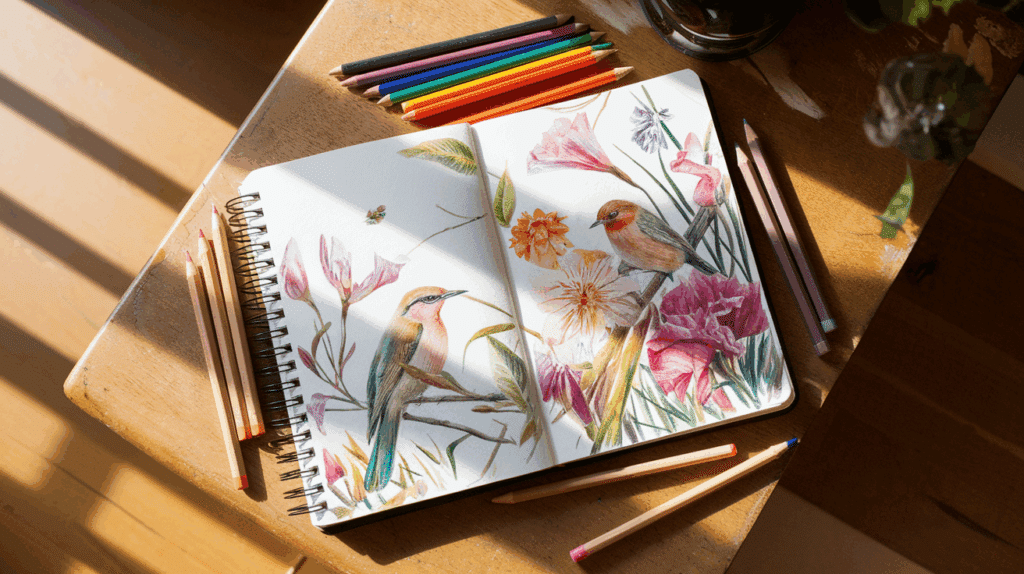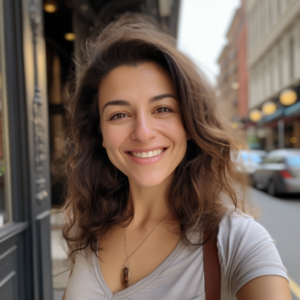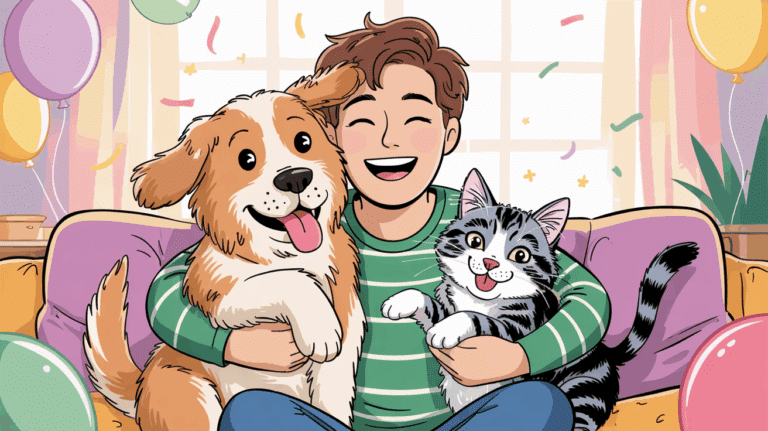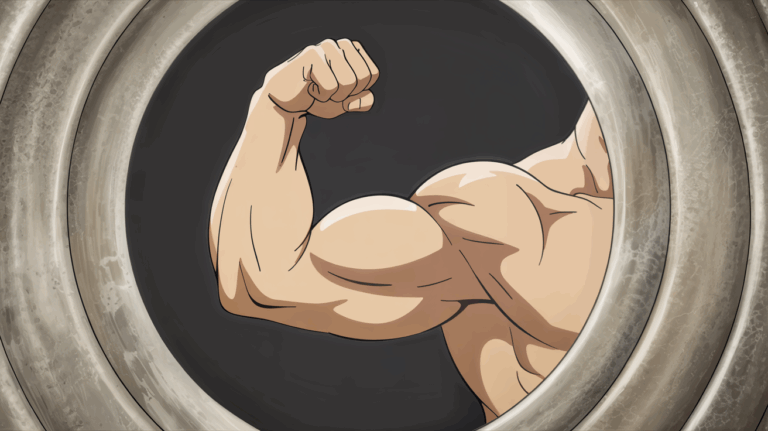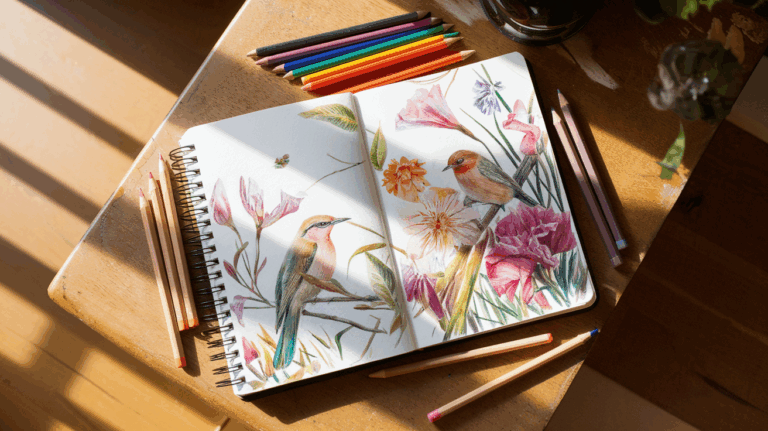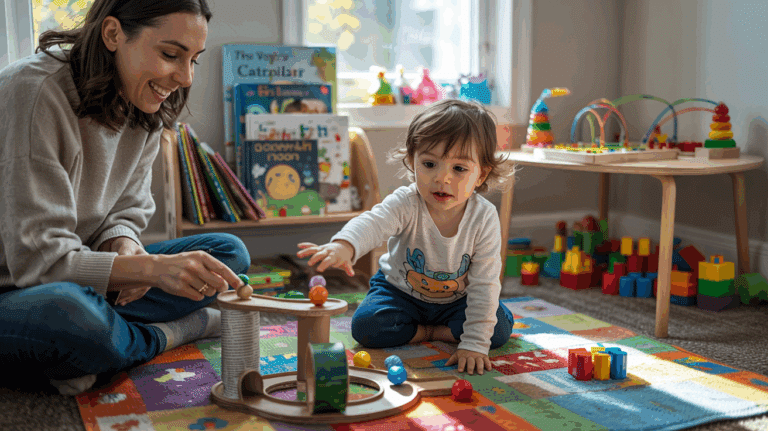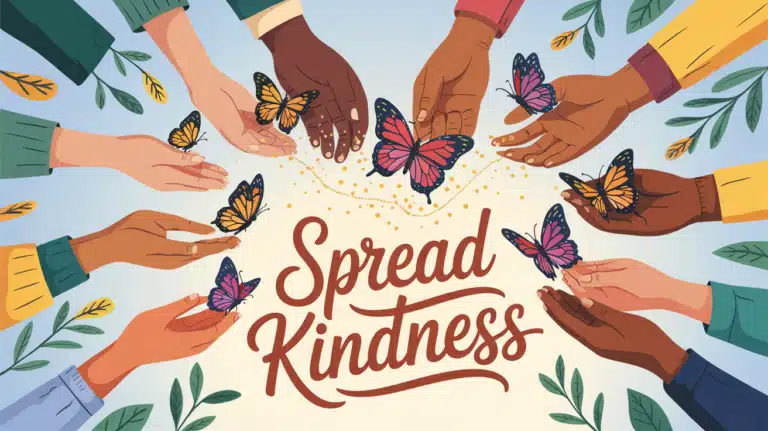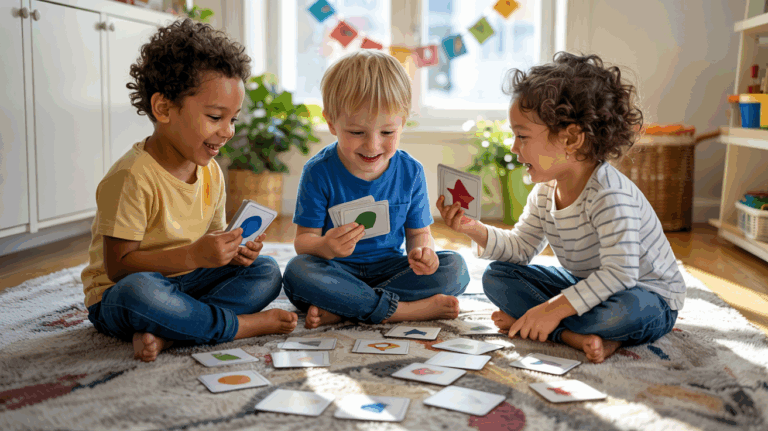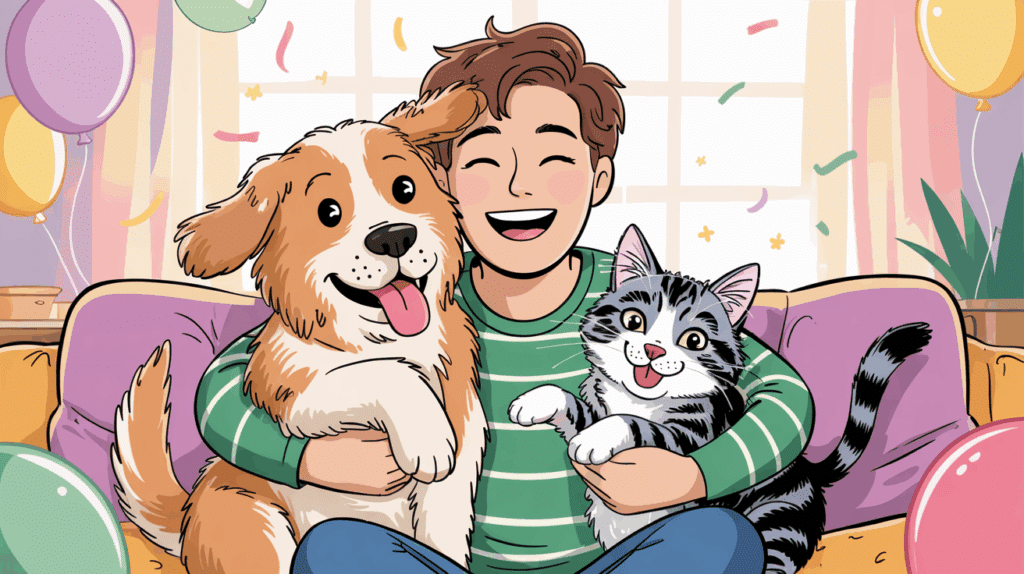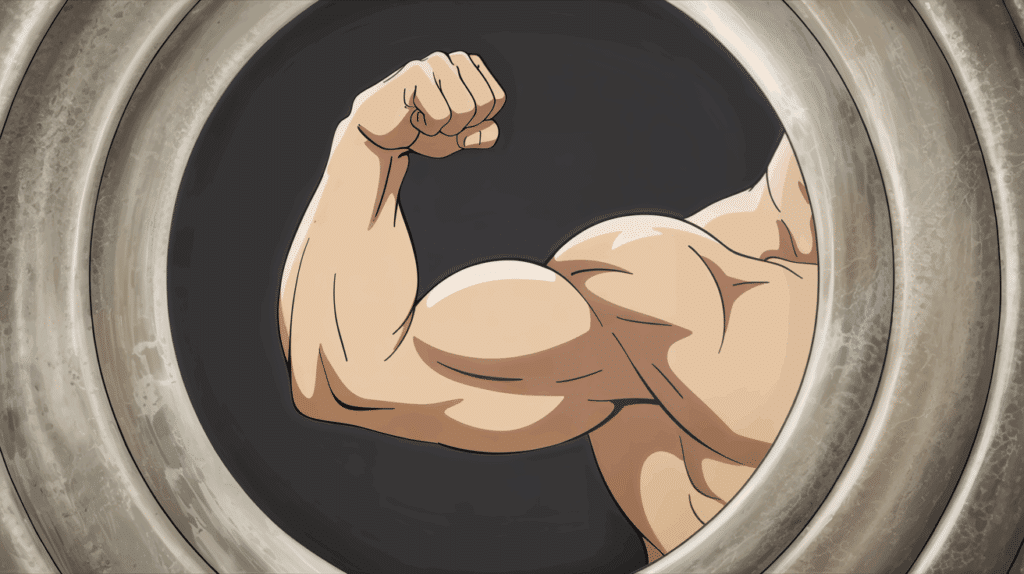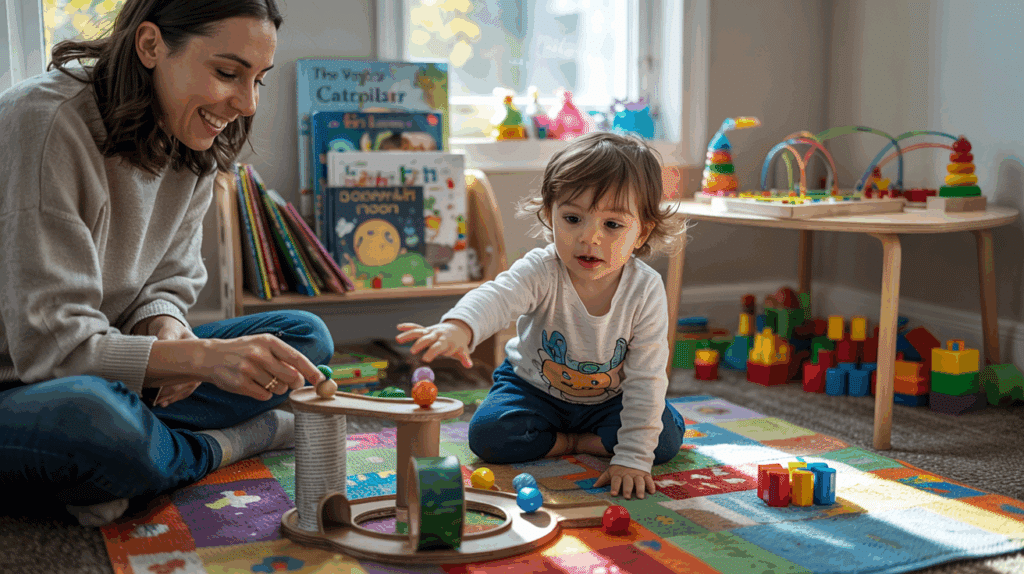Colored pencils sit unused in many drawers.
Artists often struggle to find fresh ideas for their colored pencil work. The blank page stares back, and the creative flow stops completely. It’s a common problem that leaves many feeling stuck.
But there’s good news! This article presents unique things to draw with colored pencils to make those colored pencils worth using again.
These suggestions work for beginners and experienced artists alike. Each idea offers a chance to try new techniques and styles without feeling overwhelmed.
Ready to bring those pencils back to life? Let’s look at some fun and imaginative projects anyone can try right away.
The Basics of Colored Pencil Art
Artists find colored pencils to be one of the most approachable art mediums available today. These tools allow for incredible control and precision while still offering rich color options.
Beginners often appreciate how colored pencils don’t require additional supplies like water, solvents, or special papers to start creating art.
The beauty of this medium lies in its simplicity—just grab some pencils and paper to begin making beautiful artwork.
Many new artists feel surprised by how quickly they can progress from basic shading to more complex techniques. The learning curve feels gentle compared to other art forms. Professional artists also value colored pencils for their portability and lack of mess.
They can work anywhere without worrying about spills or drying times. This makes colored pencils perfect for people who want to try art but feel limited by space or time constraints.
Essential Tips for Using Colored Pencils
Improving your colored pencil skills requires practice and knowing a few key methods. Try these tips to make your artwork stand out:
- Work in layers instead of pressing hard right away. Build up color slowly for better control.
- Test different blending methods. Use a colorless blender pencil, a tissue, or even baby oil on a cotton swab.
- Draw in small circles or use tiny lines when filling spaces for smooth, even coverage.
- Keep your pencils sharp for fine details and crisp lines.
- Try using complementary colors in shadows to add depth.
- Work from light to dark colors for better control of your final look.
- Use white pencils to highlight or soften other colors, not just for white areas.
- Take breaks to look at your work from a distance to spot any issues.
- Practice with different paper types to see how texture affects your final results.
Creative Things to Draw with Colored Pencils
Now that you have the basics down, let’s jump into some fun things to draw with colored pencils. These projects will help you put your new skills to work while keeping your interest high.
Each idea offers a chance to try different techniques with your colored pencils.
1. Abstract Geometric Shapes
Create geometric patterns using bold colors to design a lively, abstract piece. Play with angles, lines, and intersections to bring a sense of movement and energy.
- How to improvise: Use colored pencils to blend and layer colors for smooth transitions and effects.
- Skill Level: Medium
2. Cosmic Landscape
Use deep purples, blues, and starry whites to draw a galaxy or nebula. Incorporate swirling clouds and distant planets to evoke the beauty of outer space.
- How to Improvise: Layer colors gradually to get a soft, blended effect for the sky and planets.
- Skill Level: Hard
3. Botanical Mandala
Illustrate a detailed mandala design featuring leaves, flowers, and vines. Use vibrant colors like green, yellow, and pink for a harmonious yet intricate piece.
- How to Improvise: Use light pressure for subtle, fine lines and layer the colors for a more defined look.
- Skill Level: Medium
4. Underwater Scene
Draw a tranquil underwater world filled with colorful coral reefs, seaweed, and vibrant fish. Use cool blues, greens, and purples for the water and warm colors for marine life.
- How to Improvise: Focus on soft blending for water, using layering techniques for depth.
- Skill Level: Medium
5. Sunset Over the Mountains
Illustrate a stunning sunset with vibrant oranges, reds, and purples blending into a silhouette of mountains. Capture the warm, calming feeling of dusk.
- How to Improvise: Use smooth gradient blending for the sky and sharp, dark lines for the mountain edges.
- Skill Level: Easy
6. Optical Illusions
Create mind-bending optical illusions with geometric patterns that appear to pop out of the page or twist around. Play with perspective and color contrast.
- How to Improvise: Start with a light sketch of the shapes to guide the illusion’s flow before adding vibrant colored pencil layers.
- Skill Level: Medium
7. Funky Animal Portraits
Draw an animal face, like a lion or tiger, but with a twist, use bright, non-natural colors like neon greens and pinks to create a funky, abstract effect.
- How to Improvise: Add bold, exaggerated features like large eyes or funky patterns to make the animal pop.
- Skill Level: Medium
8. Victorian Steampunk Design
Illustrate a steampunk-inspired Victorian scene filled with intricate mechanical elements such as gears, clocks, and Victorian-era fashion. Use metallic and earthy tones to bring the design to life.
- How to Improvise: Highlight the contrast between the soft Victorian details and sharp mechanical elements for a dramatic effect.
- Skill Level: Hard
9. Peacock Feathers
Draw a detailed close-up of a peacock’s colorful plumage. Use a mix of blues, greens, and golds to capture the richness and beauty of each feather.
- How to Improvise: Blend the colors within each feather to give them a smooth, iridescent effect.
- Skill Level: Medium
10. Whimsical House
Create a fairytale-like house with a quirky design, surrounded by whimsical elements like flowers, mushrooms, and winding paths. Use pastel colors to keep the mood light and dreamy.
- How to Improvise: Experiment with unusual shapes and patterns for the house, such as curved roofs or oversized windows.
- Skill Level: Easy
11. Realistic Portrait
Focus on creating a lifelike portrait of a person, capturing detailed facial features and realistic shading. Use soft colors for skin tones and a range of shades for hair and eyes.
- How to Improvise: Use layering and blending techniques to achieve smooth transitions between different colors and shadows.
- Skill Level: Hard
12. Tropical Birds
Illustrate vibrant tropical birds like parrots or toucans, using bright colors for the feathers and adding intricate patterns. Experiment with bold colors like red, yellow, and blue.
- How to Improvise: Add texture to the feathers by layering colors to create a more realistic effect.
- Skill Level: Medium
13. Kaleidoscope Pattern
Design a kaleidoscope pattern with repeating geometric shapes and bright, contrasting colors. Use a combination of sharp lines and curves to add depth and movement to the design.
- How to Improvise: Experiment with different symmetrical patterns to keep the design vibrant and engaging.
- Skill Level: Medium
14. Holo-Effect Crystals
Draw a collection of crystals with a holographic effect, using various colors to create a shiny, iridescent look. Focus on highlighting edges and reflecting light within the crystals.
- How to Improvise: Use white highlights to make the crystals appear reflective and glowing.
- Skill Level: Hard
15. Gothic Architecture
Illustrate a Gothic cathedral or an archway with intricate details like pointed arches and stained-glass windows. Use dark, moody colors for the building, with brighter accents for the glass.
- How to Improvise: Use shading and cross-hatching techniques to add depth to the stonework and windows.
- Skill Level: Hard
16. Pop Art Portrait
Draw a celebrity or iconic figure in a pop art style, using bold, flat colors and clean, outlined features. Incorporate a comic book-like aesthetic with speech bubbles or patterns.
- How to Improvise: Play with contrasting colors and bold outlines for a vibrant, graphic look.
- Skill Level: Medium
17. Vintage Camera
Create a detailed drawing of a vintage camera, focusing on the texture of metal and glass parts. Use shading and soft pencil strokes to highlight the camera’s features.
- How to Improvise: Focus on details like the lens and buttons, making them the focal point of your drawing.
- Skill Level: Medium
18. Dreamy Clouds and Moon
Draw a surreal scene with soft, pastel clouds surrounding a glowing moon. Blend the colors gently to create a calming, dreamy atmosphere.
- How to Improvise: Add small stars or a silhouette to enhance the mystical quality of the scene.
- Skill Level: Easy
19. Colorful Music Instruments
Illustrate a music instrument such as a guitar or saxophone in vibrant colors, using contrasting shades to emphasize different parts of the instrument.
- How to Improvise: Highlight the curves and details of the instrument, focusing on blending colors for a smooth effect.
- Skill Level: Medium
How to Improve Your Colored Pencil Skills
Improving with colored pencils takes time and effort, but with a few practical habits and creative shifts, you can steadily grow as an artist.
Even if you’re just starting out or looking to refine your technique, consistent practice and a thoughtful approach make all the difference.
Finding new things to draw with colored pencils, from nature scenes and still lifes to imaginative concepts, helps you stay inspired and motivated.
Here are some simple, effective ways to build your skills and keep your creativity flowing:
- Daily Practice: Set aside 15-30 minutes each day for drawing. Small, regular sessions help build muscle memory and confidence with your pencils.
- Start a Sketchbook: Keep a dedicated book for trying new ideas without worry. This helps you track your progress and gives you freedom to make mistakes.
- Create a Peaceful Workspace: Find a quiet spot with good lighting for your art. Keep your supplies organized and within reach. Add some artwork you like on the walls to keep you motivated.
- Change Your Art Style: When you feel stuck, try a new style or method. Switch between tight, detailed work and loose, expressive drawing to build different skills.
- Study Other Artists: Look at work from artists you admire to learn new ways to use color and form.
- Take Breaks: Step away from difficult projects and return with fresh eyes. Sometimes the solution becomes clear after a short rest.
Final Touch
Colored pencils offer endless drawing possibilities for artists at any level. We’ve looked at how to get started with the right tools, master key techniques, and improve your skills over time.
These creative things to draw with colored pencils we’ve shared should spark your imagination and give you plenty to work on.
Remember, the key to getting better is to practice often and enjoy the process. Start with simpler subjects and move to more complex ones as you gain confidence.
Don’t worry about making perfect art right away. Focus instead on expressing yourself and having fun with these versatile tools.
What will you draw first? Share your colored pencil creations in the comments below, or tell us which idea from our list you’re most excited to try!


